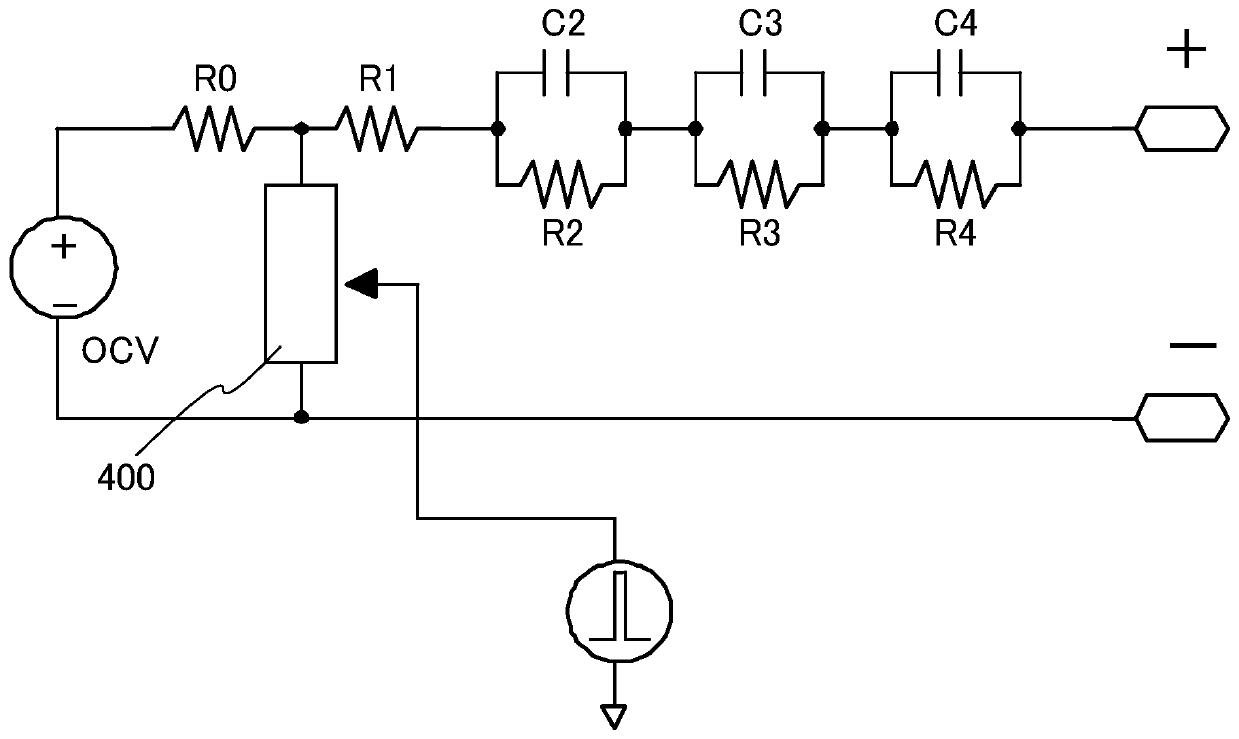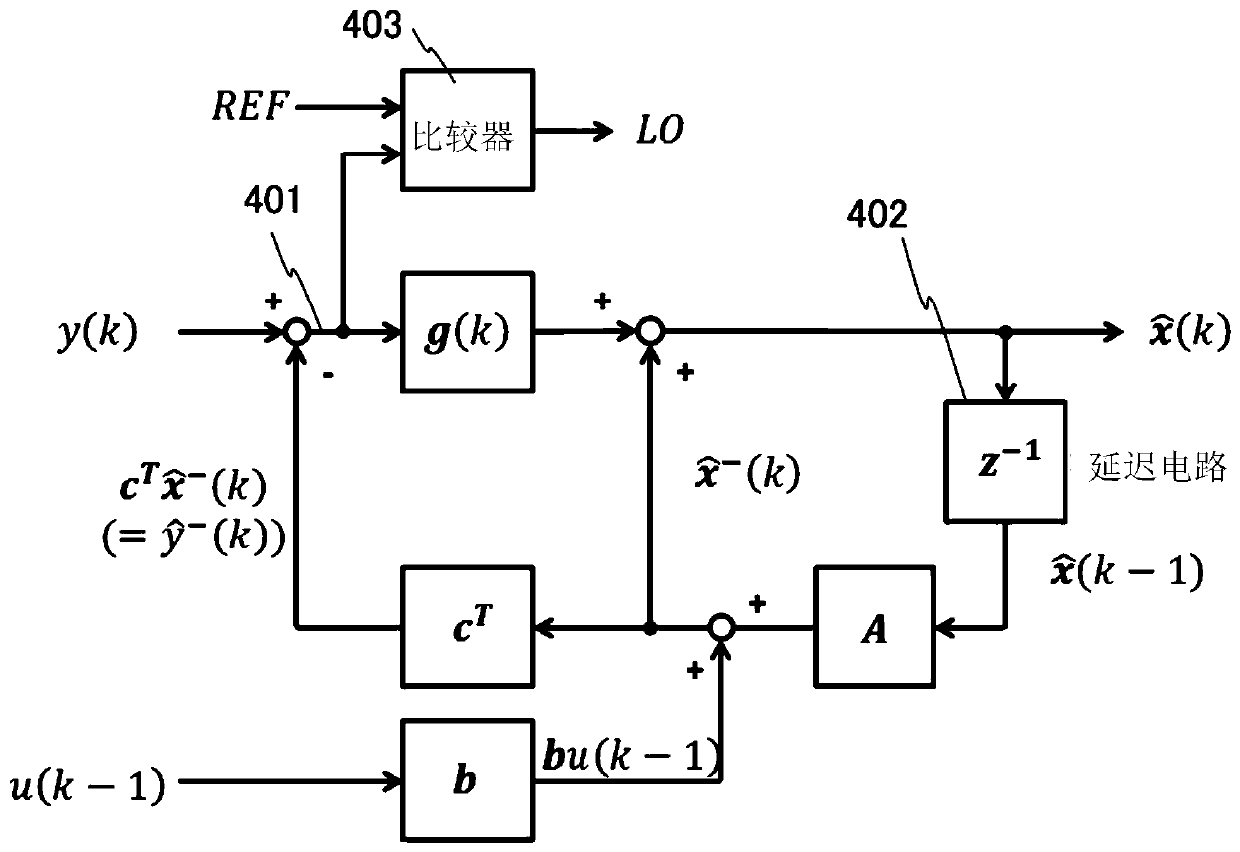Abormality detection device for secondary battery, abnormality detection method and program
A secondary battery and abnormality detection technology, applied in the fields of machines, vehicles using neural networks, abnormality detection systems for power storage devices, processes, products or compositions, and state estimation devices, can solve short circuit and temperature deterioration of secondary batteries And other issues
- Summary
- Abstract
- Description
- Claims
- Application Information
AI Technical Summary
Problems solved by technology
Method used
Image
Examples
Embodiment approach 1
[0107] figure 1 is an example of an equivalent circuit model (also referred to as a battery model) for abnormally detected batteries. figure 1 R0 shown in is composed of series resistors, R1, R2, R3, R4 are resistors. Also, C2, C3 and C4 are capacitors.
[0108] at a certain time interval figure 1 The micro-short-circuit model 400 in the circuit applies a pulse signal to simulate the occurrence of a micro-short circuit to perform numerical simulation of the battery model. In this embodiment, numerical simulation is used for the description, but the voltage of the abnormal battery is actually monitored.
[0109] figure 1 The OCV shown in the figure is the abbreviation of Open Circuit Voltage, which is the potential difference between the positive electrode and the negative electrode when the electrochemical reaction inside the battery is in an equilibrium state after a sufficient time has elapsed after the battery is disconnected from the external circuit.
[0110] F...
Embodiment approach 2
[0116] In the present embodiment, a configuration in which a neural network (NN) is used to improve accuracy will be described below.
[0117] FIG. 3 is a diagram showing an example of a functional block. The difference from Embodiment 1 is that the neural network unit 404 is included. exist Figure 3A Among them, NN is the neural network part, which is the output LO(k).
[0118] Figure 3A The part shown by the symbol 401 in is a part of the difference (voltage difference) between the observed value (voltage) and the voltage estimated using the prior state variable. This voltage difference value is input to the neural network unit 404, and the value is compared with the learning data to determine whether or not there is an abnormality. In addition, by accumulating the data input to the neural network unit 404 as a part of the learning data, the accuracy can be further improved.
[0119] also, Figure 3B is one of the other ways. exist Figure 3B In the functional bloc...
Embodiment approach 3
[0124] In the present embodiment, a configuration in which the accuracy is further improved by using another comparator will be described below.
[0125] When investigating the relationship between the elapse of time and the voltage difference, an error different from the timing of the occurrence of the micro-short circuit was found. The present inventors found that an error occurs when charging is switched in a secondary battery. like Figure 6A As shown, it was confirmed that the terminal current changed with the discharge timing.
[0126] No overshoot on the positive side was observed during charge-discharge switching. On the other hand, if Figure 6B As shown, when a micro-short circuit occurs, overshoot occurs on both the positive side and the negative side. The overshoot on the positive side occurs because the modification of the prediction error is reflected in the next step. Overshoot occurs first on the negative side and then on the positive side. Based on this di...
PUM
 Login to View More
Login to View More Abstract
Description
Claims
Application Information
 Login to View More
Login to View More - R&D
- Intellectual Property
- Life Sciences
- Materials
- Tech Scout
- Unparalleled Data Quality
- Higher Quality Content
- 60% Fewer Hallucinations
Browse by: Latest US Patents, China's latest patents, Technical Efficacy Thesaurus, Application Domain, Technology Topic, Popular Technical Reports.
© 2025 PatSnap. All rights reserved.Legal|Privacy policy|Modern Slavery Act Transparency Statement|Sitemap|About US| Contact US: help@patsnap.com



